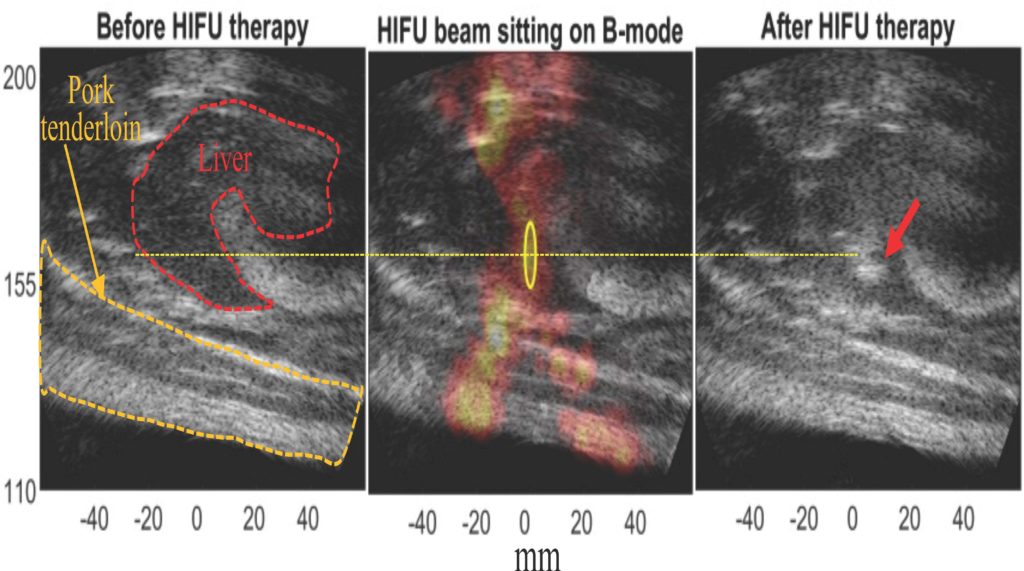
Although HIFU has been successfully applied in various clinical applications in the past two decades for the ablation of many types of tumors, one bottleneck in its wider applications is the lack of a reliable and affordable strategy to guide the therapy. This study aims at solving the problem by estimating the therapeutic beam path at the pre-treatment stage so as to guide the in-situ therapeutic procedure. Specifically, the HIFU transducer sends out a sub-therapeutic sound pulse and the imaging transducer is synced to listen to the sound scattered back from within the tissue. To reconstruct the sub-therapeutic beam path, an incident beam mapping technique using passive beamforming is proposed and implemented on a clinical HIFU system which needs to be combined with an ultrasound imaging system, and a mathematical optimization model is created to locate the therapeutic focal region.
The technique was comprehensively evaluated, and its superior performance over existing methods was demonstrated with in-vitro, ex-vivo and in-vivo experiments. Focal regions of the incident beam paths estimated by the proposed technique, when overlaid onto their corresponding in-situ B-mode guiding images, nearly coincided with the actual damaged region, with deviations around 1 mm even under in-vivo situations. It was also shown that the acoustic energy transmitted by the HIFU transducer for beam mapping can be well controlled below a level similar to the diagnostic ultrasound, meaning that this technique was safe and would not cause damages to biological tissues. Most importantly, this technique is, to a large extent, tolerant of sound speed inhomogeneities in the tissue, and can be potentially applied to guide other ultrasound-related beam manipulating applications.
